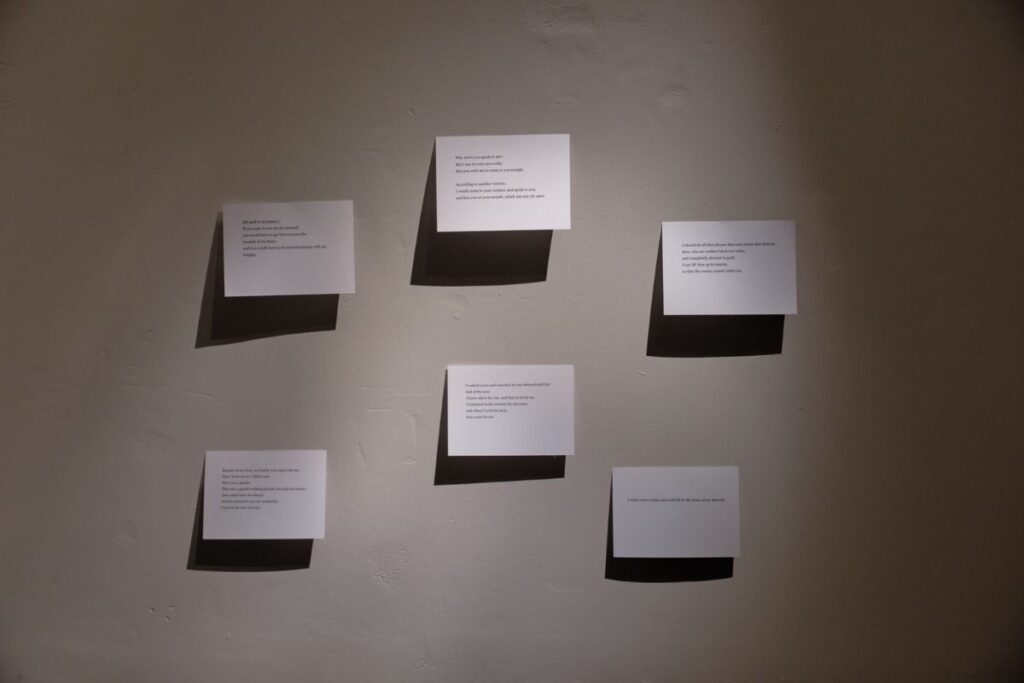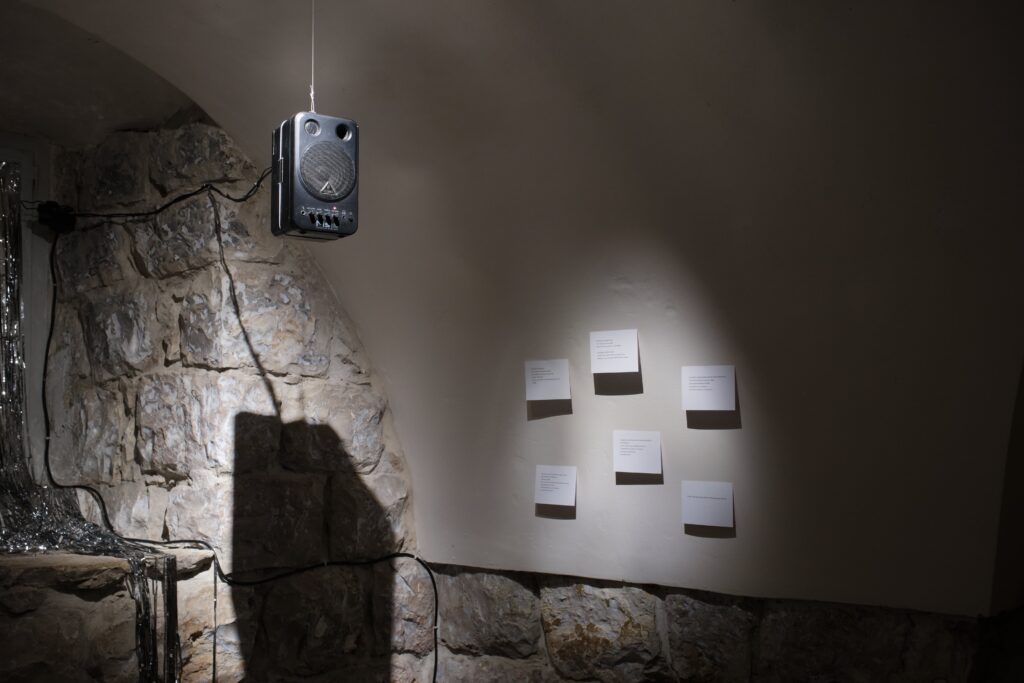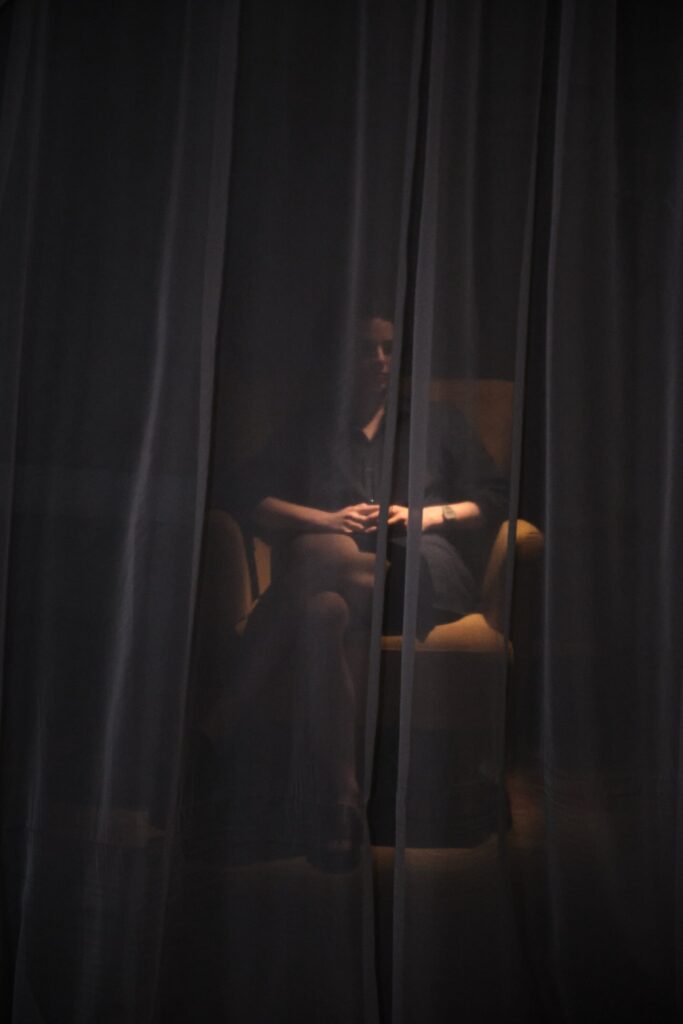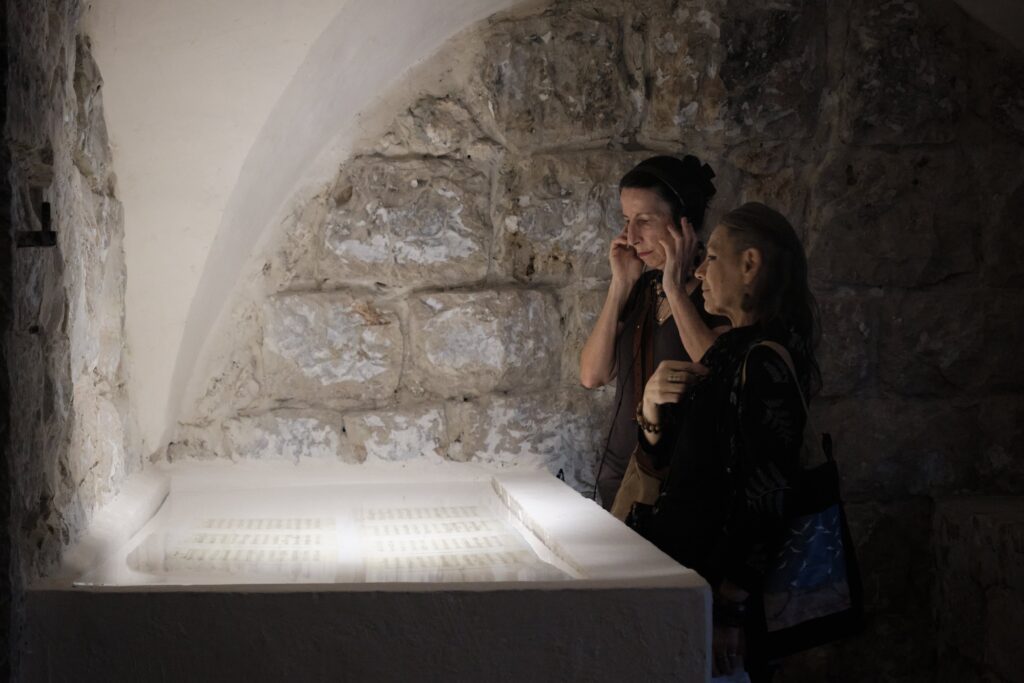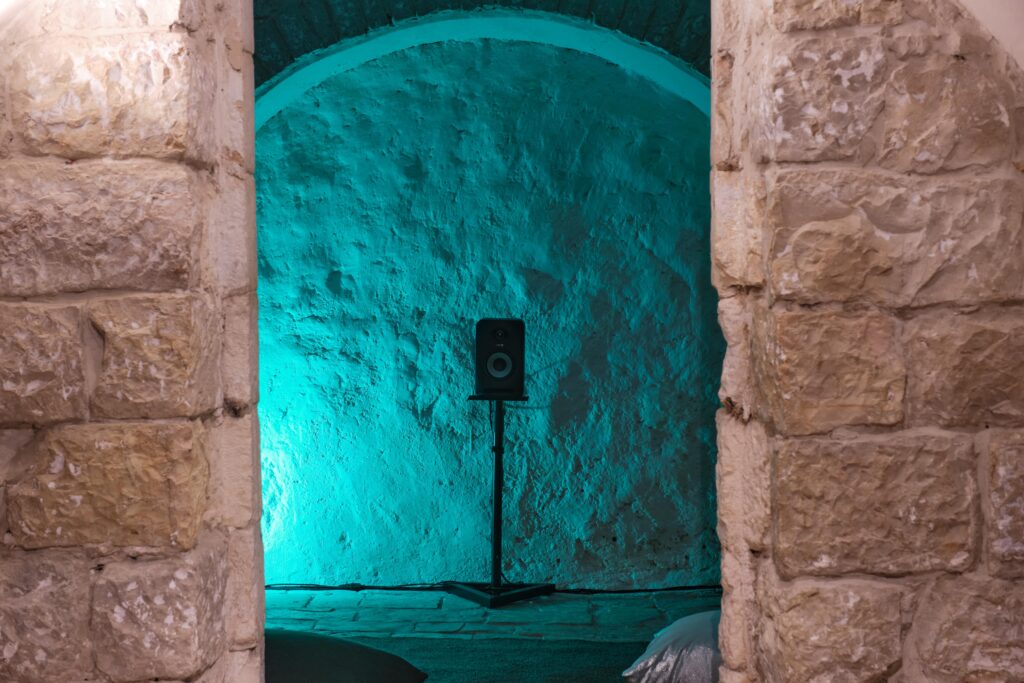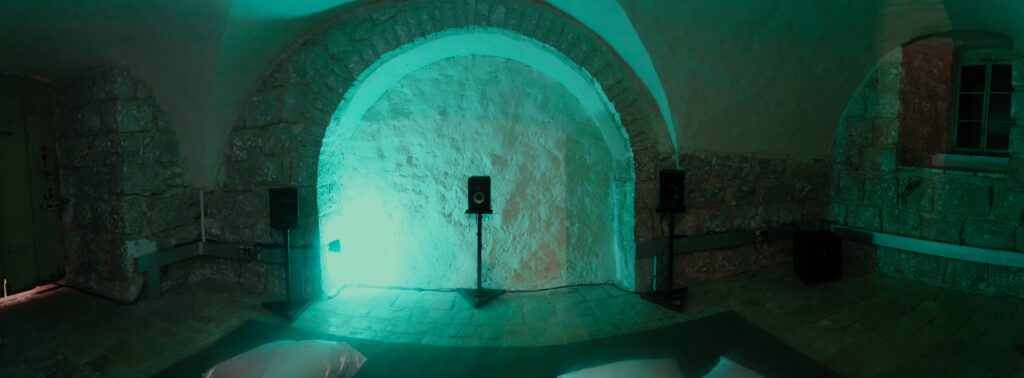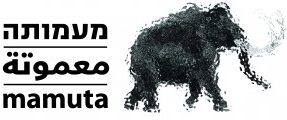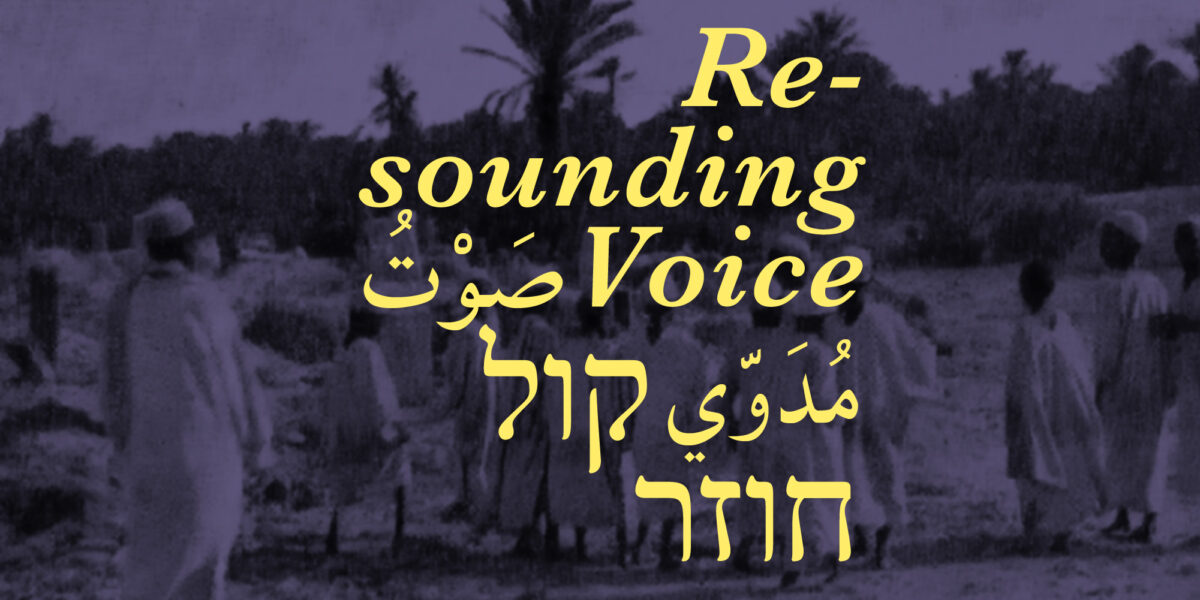Netta Weiser
Curator: Lea Mauas, Maayan Sheleff
31.10.25 - 26.12.25
In “Resounding Voice” Netta Weiser reactivates a sound archive recorded in Egypt in 1933 by Brigitta Schiffer (1909–1986), a Jewish-German composer and musicologist whose life was shaped by experiences of migration and exile. In her youth, Schiffer lived in Alexandria; she completed her academic studies in Berlin, and coinciding with the rise of the Nazi regime — she fled Germany and lived in Cairo for 30 years. Her doctoral research focused on Siwa, an isolated oasis in western Egypt, documenting the diverse vocal and musical practices of the local Amazigh community.
Weiser, an artist and choreographer born in Israel and based in Berlin, integrates sound installations, performance, and experimental radio in her oeuvre. Through dialogue with various artists, Weiser explores how sound and radio can make present silenced histories. Her practice focuses on the works of women such as Birgitta Schiffer, who worked in exile and subverted conventions and limits set for them.
In 1933, Schiffer recorded a boys’ choir singing a funeral song and later composed a piece for a string quartet inspired by the recording on wax cylinders. The sound installation central to the exhibition, consisting of six loudspeakers, also responds to the mourning song. Weiser used the original recording from Siwa together with Schiffer’s composition. She produced electronic sounds from the original records including the scratching noises made by the phonograph needle. Weiser collaborated with flautist Roy Amotz, who improvised in response to the materials. Schiffer and Weiser’s act of listening and their musical responses emphasize the repetitive cyclicity of history from different perspectives of time and place.
Another sound piece is a work for a single loudspeaker, also based on songs recorded by Schiffer in Siwa and presented in the Archive as work songs sung during the date harvest. Music historian Matthias Pasdzierny, who researched Schiffer’s oeuvre, argues that these are encoded love songs among men, most of whom were work immigrants from the Sub-Sahara (countries south of the Sahara Desert). The lyrics blend contents of love, migration, and economic status. Desert acoustics enable the solo voice to carry for great distances, thus the call-and-response taking place on the treetops of the date orchard facilitated a network for conveying messages – often subversive ones – like an early radio.
The video screening in the exhibition was filmed by Antje Engelmann during a research trip to Siwa organized by Matthias Pasdzierny in 2023. While we hear the local musicians playing , no faces are visible since the singers requested that they would not be shown. The goal of the trip was to return Schiffer’s recordings to the local community and make them accessible, as well as to explore possibilities of collaborating with local musicians. The trip was part of Pasdzierny’s research on the complexity of the culture of memory of colonialism and of the Shoah, examining their impact on contemporary approaches to the decolonisation of archives, especially when it touches upon restoring historical practices and artworks to their original owners, or reactivating them.
Collaborating with vocal artist Chanan Ben-Simon, the two listened to the recordings together and prepared their own vocal response. The result is not a finished product, but a sort of infinite repetition reflecting fragments of attentive listening and learning. Ben-Simon and Weiser wrote the scores displayed in the exhibition opposite Schiffer’s score for a string quartet. In contrast to the latter’s classical score indicating specific instructions for the performer, Ben-Simon’s score is open and unraveled, offering only qualities and intentions. The closing event for the exhibition will comprise a performance by Ben-Simon based on the displayed scores.. In this way, “Re-sounding Voice” reflects not only the complexity of the intercultural gaze, but also the challenge involved in documenting and framing oral practices.
Another artwork engages in methods of healing originating in collaborations between Jewish and Muslim women in Morocco and in diasporic communities. The work, made in 2024 as a sound installation, is presented here for the first time as an audio work for headphones, an invitation to an intimate listening experience. The work is a collaboration between Weiser and researcher Vanessa Paloma Elbaz. In 2015/16, Elbaz made rare recordings of fertility blessings in Judeo-Arabic recorded in Casablanca. In composing her piece, Weiser integrated these recordings with frequencies from the ancient solfège scale which is believed to have the power to heal the body.
In the past, the intergenerationally-transmitted blessings concealed messages about sexuality and women’s bodies which were impossible to state openly. Many engaged in the contexts of pregnancy and childbirth. According to the Jewish-Moroccan tradition, it is believed that the voice transmits the blessing from the mouth of the one blessing to the body of the blessed. The work engages in the issue of whether and how the power of oral traditions is preserved even when listening to a recording.
This sound installation alongside of the pieces responding to Schiffer’s archive forms a polyphonic genealogy of women who record and create sound archives (among them Weiser herself) operating out of the experience of emigration and multicultural contexts.
The works in the exhibition facilitate a space for listening to vocal practices of mourning, blessing, or love – of music possessing magical or performative power attempting to make concrete impact on the physical body. Thus, spaces were created for listening to multiple narratives of art during times of war, love and mourning, death and birth, feminist and queer legacies. During this period of the re-emergence of ideologies of segregation, silencing, and repression of the other or the foreigner, the exhibition strives to open up a place for complex identities and narratives and to examine the power of the voice to cross borders, times, and spaces.
The exhibition was developed as part of the Goethe-Institut Israel residency program in Jerusalem, in collaboration with the Mamuta Art and Research Center and the Media Department of the Ethnological Museum, Berlin.
Mamuta Art and Research Center | Artistic Director: Lea Mauas | Projects Manager: Or Mai | | Assistant Producer: Or Aloni | Mounting: Itamar Mevorach | Lighting: Eitan Haviv | Sound Mix: Daniel Koronkevich | Hebrew Editing: Ronit Rosenthal | Arabic Translation: Anwar Ben Badis | English Translation: Y. Appleton | Graphic Designer: Maya Shleifer
